June 2-4th 2012
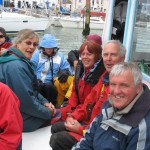
The main reason for getting the boat to Portland was to take part in the RYA Passage to Portland Rally. The rally was timed to coincide with the Skandia Sail for Gold Regatta. This event is one of a world series of dinghy events but takes on a special significance this year given the Olympics taking place less than two months later.
Most of the Olympic competitors are taking part along with various Olympic hopefuls and other international high-fliers. With over 500 boats, 700+ competitors and 300+ coaching RIBs, it is a major logistical exercise.
Saturday June 2nd – After our sail to Lulworth Cove we registered for the rally. To our surprise we found that Roger was one of the winners of a trip on the Boat Project which was at the rally. After our complimentary drinks (they sold Doom Bar at the Boat that Rocked Cafe in the marina), we had supper on board and Roger and Sue arrived later in the evening.
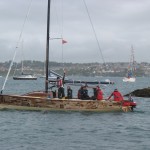
Sunday June 3rd – An early start for Roger to have his trip on the Boat Project. See the Boat Project picture gallery for some photos. There was a fairly lively breeze with it having switched from E5-6 the previous evening to W5-6 the next morning, so they sailed with two reefs down and a working jib.
After this we were given a talk by John Tweed, the Chief Executive of the WPNSA. The Academy started sailing operations on part of the Royal Naval Air Station site in 200, but in 2003 they were in a position to start to extend the site and convert some of the buildings vacated when the helicopter base closed. In 2005 London was chosen for the 2012 Olympics and the WPNSA was the venue for the sailing events. This allowed more funding and the extension of the slipways and buildings to meet Olympic venue standards. The new slipways, breakwaters and pontoons were all finished in 2008 making it the first Olympic venue to be completed. See the Passage to Portland gallery for more photos.
The tour was fascinating. We found out all about the measuring process, the facilities available and the complete lock-down of the site required during the Olympic period. All boats will be required to vacate the marina and even Sunseekers will stop production and move out of their factory for the two months of the games and the paralympic games. We were also able to wander around and watch the sailors preparing their boats.
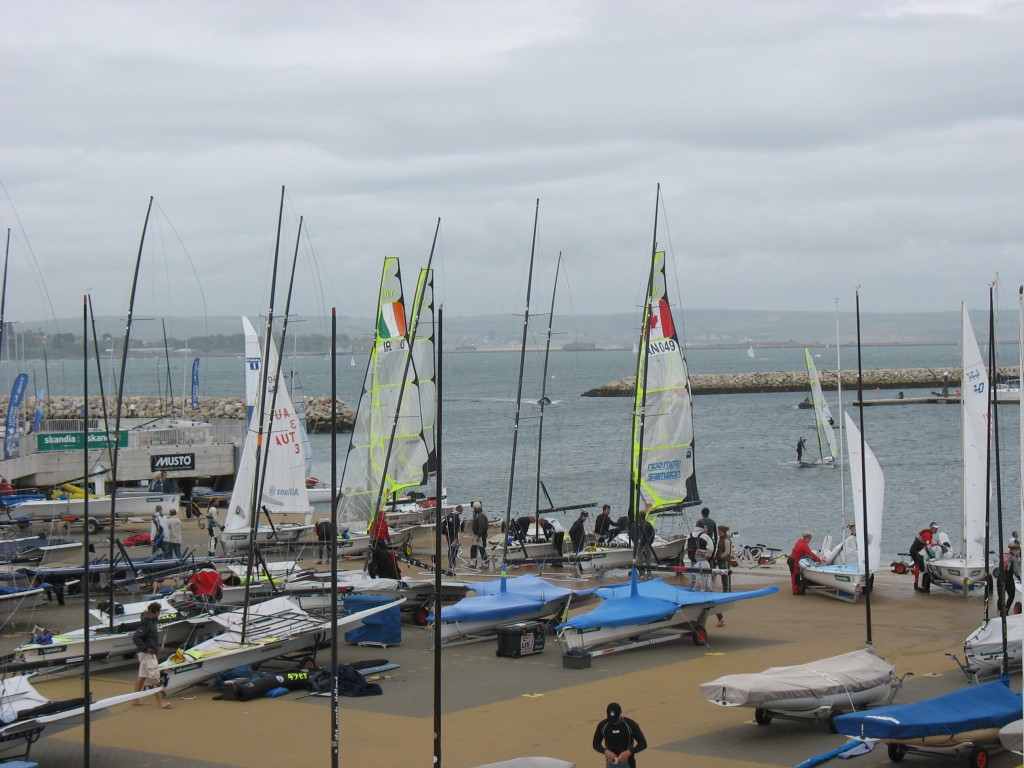
In the evening we had a drinks reception with the British and Brazilian Olympic sailing team and then a dinner in Portland Castle. We saw various of the Olympic team from a distance!
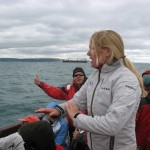
Monday June 4th – The main activity for the day was to go out and watch the first day of sailing at the Sail for Gold Regatta. We started out by going out to the Nothe course. This is the course right under the Nothe that will be used for all the medal races during the games. The course was being used for the women’s match racing in the Elliot 6m. Initially we were trying to work out what was going on, but we had Sarah Ayton (double Olympic gold medallist in the Yngling) on board and she explained the process to us. Each team races each other twice in the initial round robin. They are allocated either the port or starboard end of the line for their first race and then in the second race, they switch ends. Yellow and blue flags on the leech indicate which boat is which. On the four minute they come in from their allocated end and come together usually coming head to wind in what is called the dial-up. They then each try to get on each other’s tail and force a penalty or force them to make an early or poor start. They are continuously followed by a jury boat each which will make an instant judgement in the event of an incident. They will either show a green and white flag which means they don’t believe there has been an infringement or they will show a yellow or blue flag meaning a penalty to that boat.
The spectator boat then had a problem with the exhaust and we had to potter slowly into Weymouth for repairs. This meant we had a nice trip round Weymouth and they arranged a coffee for us at Weymouth Sailing Club. A lovely club right on the south side of the harbour with a lovely view across the town and the bay. Once the boat was repaired, we headed back to Portland.
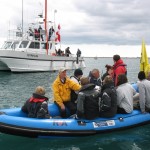
After lunch we headed out again – this time to the 49er course. With immaculate timing they postponed the racing just as we got there. However, the PRO on this course, David Campbell-James, invited us on board the committee boat to have a look round. He gave us a fascinating insight into setting courses and managing a race course. A ‘reference point’ is set within the course area (which is a circle of around one and a half miles in diameter) and the line, the windward mark and the leeward gate are all set based around this point. What amazed us was the precision with which all this was done. He even had a table on board that gave him the distances required to change the line bias by as little as one degree! This committee boat was paid for by LOCOG and will be presented to the RYA after the games.
The wind then filled in and we got to watch a 49er race. The first start was abandoned with just over a minute to go as they gathered in a group at the pin end and the line was reset with the pin end dropped back a little. We saw the start and the first beat and run and then watched the second windward mark rounding as we headed in.
That evening we went to the WPNSA again and while eating our hog roast watched Ben Ainslie outside packing up his Finn. We had a short talk from Tim Hall, the Sail for Gold Regatta director letting us into more detail about the complexities involved in running major regattas of this nature. Overall a great weekend and a fascinating insight into the Olympics.
See the Passage to Portland activities and Sail for Gold picture galleries for more photos.

